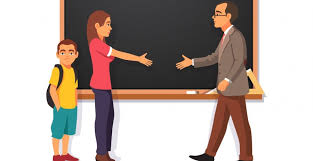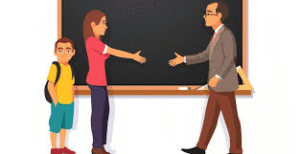Modern education faces the exciting challenge of preparing students for a rapidly evolving world while honoring the fundamental principles of effective teaching and learning. A dedicated teacher today must navigate between time-tested pedagogical approaches and innovative technologies that can enhance student engagement and understanding. The research is clear that teachers remain the most critical factor in student success, with their influence extending far beyond academic instruction to encompass emotional support, motivation, and long-term educational outcomes.
The strategic use of kids animated shows in educational settings represents one of the most promising developments in contemporary pedagogy, offering teachers powerful tools for visualization, engagement, and concept reinforcement. Studies indicate that well-designed educational animation can improve learning outcomes by significant margins while addressing the diverse needs of today’s learners.
The Evolution of Educational Media
The journey from traditional educational films to sophisticated animated content reflects broader changes in how we understand learning and child development. Early educational media often took a didactic approach, presenting information in a straightforward manner with limited interaction or engagement strategies. Today’s educational animation incorporates insights from cognitive science, developmental psychology, and media studies to create content that truly supports learning objectives.
Teachers who understand this evolution can make informed decisions about which animated content will best serve their students’ needs. They recognize that not all animated content is created equal and develop skills for evaluating programs based on educational value, developmental appropriateness, and alignment with curriculum standards. This critical evaluation process ensures that classroom time is used effectively and that students receive maximum benefit from multimedia experiences.
Cognitive Load Theory and Animation Design
One of the most significant advantages of combining teacher expertise with educational animation lies in the application of cognitive load theory to instructional design. Effective teachers understand that students have limited cognitive resources and that learning is optimized when information is presented in ways that minimize extraneous cognitive load while maximizing germane cognitive processing.
Quality educational animation achieves this balance by presenting information through multiple channels without overwhelming students with unnecessary details or distracting elements. Teachers can enhance this effect by providing appropriate scaffolding, asking focusing questions, and helping students make connections between animated content and their existing knowledge. This collaborative approach between human expertise and technological capability creates optimal conditions for learning.
Social Learning and Peer Interaction
The use of animated content in group settings provides unique opportunities for social learning and peer interaction. When teachers facilitate viewing experiences that include discussion, collaboration, and shared reflection, they create communities of learners who support each other’s understanding and growth. Students often feel more comfortable sharing ideas and asking questions in the relaxed atmosphere that accompanies well-structured media experiences.
Teachers skilled in group facilitation use animated content as a catalyst for meaningful peer interactions. They might pause programs at strategic moments to encourage prediction or discussion, assign different students to focus on specific aspects of the content, or create collaborative projects that extend the learning beyond the viewing experience. These social learning opportunities help students develop communication skills while deepening their understanding of academic content.
Executive Function and Self-Regulation
Recent research has highlighted the importance of executive function skills in academic success and life outcomes. Educational animation, when used thoughtfully by skilled teachers, can support the development of these crucial cognitive abilities. Programs that feature characters making decisions, solving problems, and managing emotions provide models for students to observe and discuss.
Teachers can use animated scenarios as case studies for exploring executive function strategies such as planning, working memory, and cognitive flexibility. By discussing characters’ decision-making processes and exploring alternative approaches, students develop metacognitive awareness and self-regulation skills that transfer to academic and social situations.
Language Development and Literacy Skills
The rich narrative structure of quality educational animation provides excellent support for language development and literacy skills. Teachers can use animated stories to introduce new vocabulary, explore narrative elements, and discuss character motivation and plot development. The visual context provided by animation helps students understand new words and concepts while building comprehension skills.
For English language learners, animated content offers valuable exposure to natural language patterns and cultural contexts. Teachers can use these programs to support language acquisition while building content knowledge, creating efficient learning experiences that address multiple objectives simultaneously. The engaging nature of animation helps maintain motivation during the challenging process of language learning.
Creative Expression and Arts Integration
Educational animation often inspires students to engage in their own creative expression, providing teachers with natural opportunities for arts integration. Students might create their own animated stories, design characters, or develop scripts based on educational themes. These creative projects deepen understanding while building skills in visual arts, creative writing, and digital literacy.
Teachers who embrace arts integration recognize that creative expression enhances learning across all subject areas. They use animated content as inspiration for interdisciplinary projects that combine academic content with artistic exploration, creating memorable learning experiences that appeal to students with diverse interests and abilities.
Family Engagement and Home-School Connections
The popularity of educational animation among children creates opportunities for extending learning beyond the classroom through family engagement. Teachers can recommend specific programs for home viewing, provide discussion guides for families, and create projects that involve family members in the learning process. This home-school connection reinforces classroom learning while building stronger relationships between educators and families.
When teachers help families understand how to use animated content educationally, they multiply the impact of their instruction and create consistent learning environments across settings. This partnership approach recognizes that children’s education is most effective when all the adults in their lives work together toward common goals.
Future Directions and Emerging Technologies
The field of educational animation continues to evolve with advances in technology and deeper understanding of learning processes. Teachers who stay current with these developments position themselves to take advantage of new opportunities for enhancing student learning. Virtual reality, augmented reality, and interactive media represent exciting frontiers that will likely transform educational animation in the coming years.
The most successful educators approach these emerging technologies with both enthusiasm and critical thinking, evaluating new tools based on their potential to support learning objectives rather than adopting them simply because they are novel. This balanced approach ensures that the fundamental goal of education – supporting student growth and development – remains at the center of all technological integration efforts.
The partnership between skilled teachers and quality educational animation represents a powerful force for positive change in education, creating learning environments that are both academically rigorous and emotionally engaging while preparing students for success in an increasingly complex and interconnected world.






